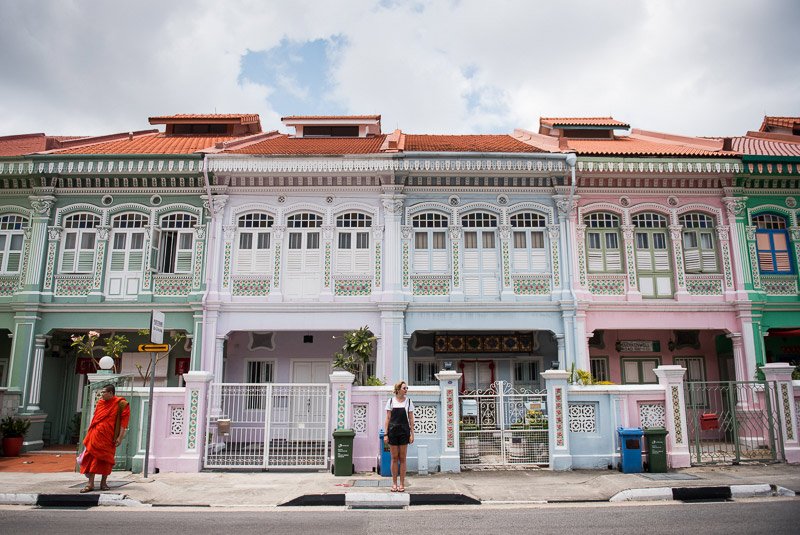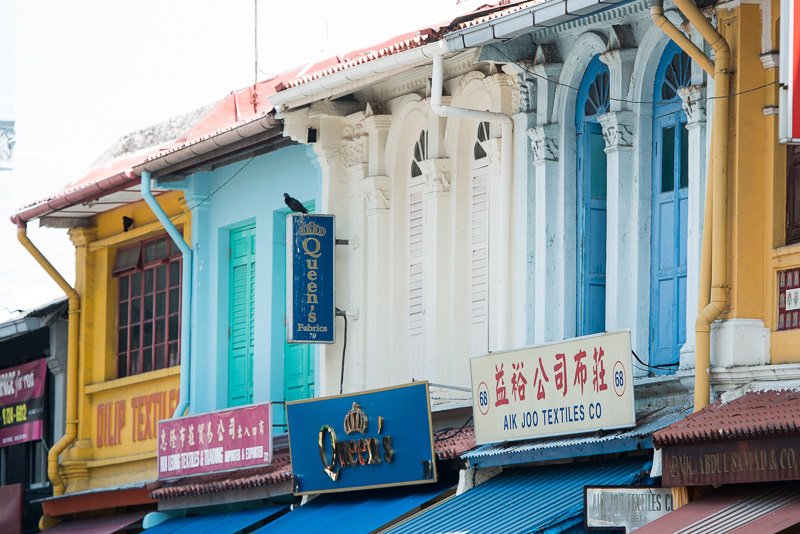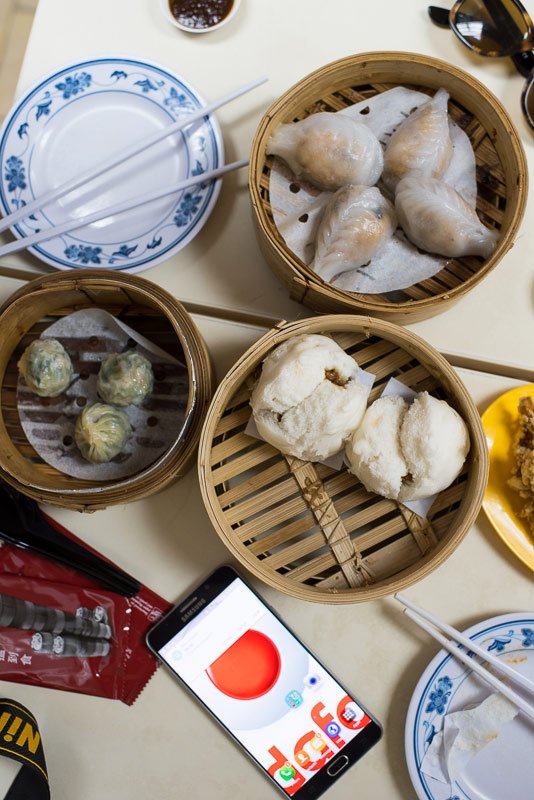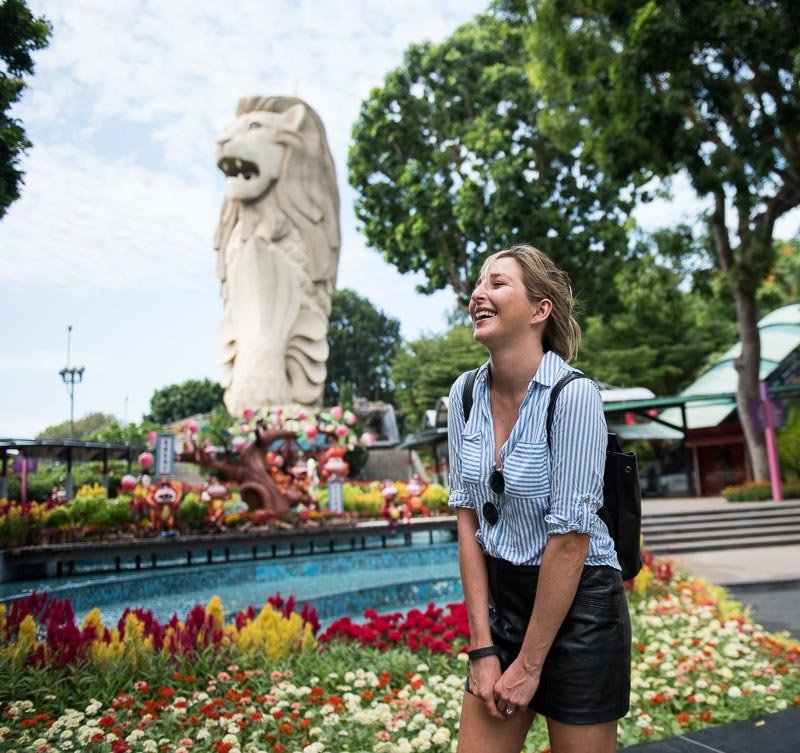Singapore is a city with trade in its DNA, shopping as its heartbeat, food as its lifeblood and a colossal airport serving as the muscle that powers people through it all.
With international flights landing on average every 90 seconds, it equates to something like 55 million travellers calling Singapore their travel pit-stop each year.
It’s this hub of truly epic proportions, to the point that it’s exciting to pause your journey there just to experience the sheer streamlined perfection of it all.
The trains? Militantly well-timed. The queues? Practically British in their polite patient organisation. The WiFi? So full and abundant it’s as though God smelted the tiny wires in the routers himself.
There’s no doubt this reputation for the flawless has served the city’s business travel scene extremely well. But some travellers might say that this almost OCD approach to functionality can put a damper on its cultural life-force.
Or so we thought.
Driven by curiosity and powered by a Singapore Stopover Holiday (SSH) booked through Singapore Airlines (starting from just $45 with any SQ flight passing through Singapore it will score you accommodation, return airport transfers AND admission to many major local attractions. Legitimately the best travel deal around right now) we were surprised to discover the other side of the city state.
Turns out there’s actually a whole lotta soul behind the largess. Here’s why…

EDUCATION ON MULTICULTURALISM IS EVERYWHERE
We know many cities talk big on the myriad of cultures and ethnicities that reside within their borders. And so they should, inclusivity is great and who doesn’t like to feel welcome to the party?


But what will strike you in Singapore is how openly it celebrates and highlights the unique aspects of every nationality, culture and religion that call it home. Which makes sense because the Lion City would not be what it is today if it was not for the eclectic mix of people who, through the generations, have grown to become Singaporeans. From the early days of British colonisation and the establishment of government and law; through the escape and rebuilding following the Japanese occupation; to gaining independence from Malaysia thanks to the late Prime Minister Lee Kuan Yew – to sum up a very rich and complex history into a sentence – the eclectic mix of Malay, Chinese, Arabic, Indian and more (too many in number to mention) have forged a city so rich you can’t but help to love it and the deep passion Singaporeans hold for it.
Often you’ll find signs with brief history lessons peppered around the more historic suburbs such as Balestier, Little India and Kampong Glam. Each of these enclaves are touristy in their own ways (Balestier to a lesser extent) but for good reason. For instance, the Sultan Mosque that headlines the top of Muscat Street in Kampong Glam is truly a stunning piece of architecture and you might have to jostle a little with other snap-happy travellers to get a perfect shot.



Fun fact, in what’s possibly the best example of Singaporean multiculturalism at work, in 1930 the mosque was redesigned by architect Denis Santry — an Irishman.


But by far the most heartening place we spotted this celebration of ethnicities was, surprisingly, aboard the Singapore Flyer (FREE entry when you travel on SSH), the fairly new ferris-wheel on the edge of Marina Bay.
If you can tear your eyes away from the view mid-ride you’ll find placards on the wall with brief bios of the major local nationalities, such as the Malay, Peranakans (descendants from the late 15th century Chinese immigrants), Chinese, Indian, Expat and Eurasian. Also outlining the positive influences each has brought to the culture of the region.
It’s enough to make you wonder what good could be achieved if more countries adopted this kind of street-level education.

TIP: You’d think that with such a diverse crowd that communication would be somewhat tough but in typical Singapore fashion they’ve got that handled. English is the republic’s agreed first language, meaning you’ll never get lost and the first time you ask a stranger for directions with little to no problems you’ll likely get a bit of a shock.
For this reason you might jokingly refer to Singapore as ‘Asia-lite’. But that is probably before you…
… GET A LESSON IN HISTORY THROUGH ARCHITECTURE
Especially when you come across the beautiful examples of Straits Eclectic houses, which are arguably the greatest physical embodiment of Singapore in a single structure.
Once again this theme of cultural intermingling is proudly showed off, this time in full rainbow glory on the sides of the road. We say forget the water-spouting Merlion, it’s all about the colourful and curious ‘rojak’ mix of East-meets-West construction that you’ll spy in most of the more traditional neighbourhoods.


The style was popular from the early 20th century right through to the 1930s and borne from the Paranakans, which are the descendants of the Chinese and Indian immigrants who married indigenous people from the Malay Archipelago in the 15th century.
You can quickly identify the style from the elaborate baroque plaster renderings on the building exteriors, matched with the Chinese-inspired bat-shaped windows on the first floor (for good luck), along with Malay influenced timber fretwork adorning the entryway.
Basically, if it slightly confuses you then it’s probably Straits-Eclectic and we guarantee 30 seconds of staring at the colours and detail will lift any weary traveller’s mood.





TIP: By far the best example is on Koon Seng Road in Katong. You’ll also find samples of Chinese Baroque along Serangoon Road in Balestier.
EVERY CAB DRIVER HAS A STORY (& A FAVOURITE PLACE TO EAT)
Maybe it’s because so many internationals merely fly in and out without a thought to dig a little deeper beyond the shopping mecca of Orchard Road, but unlike other major hub cities that funnel tourists around with an effective but indifferent vibe, do not be surprised if you end up having a good old chinwag with your Singaporean cabbie. Especially if you ask to be taken somewhere slightly off the normal tourist track.
Hop into a cab and ask to be taken to Swee Choon Dim Sum in Jalan Basar and watch your driver light up. With its iconic soft buns and quality ingredients, Swee Choon is a favourite for any self-respecting Singaporean but most travellers would need to be in-the-know to go there. Suddenly you’ll feel a wave of respect wash over the back seat and before you know it you’ll be swapping stories on insider spots in the city like old friends.
Want to get a best friend for life and eat like a king? Ask your driver for his or her suggestions.
On one such adventure, we ended up at a place reportedly ‘better than Swee Choon!’; Wen Dao Shi on Serangoon. We wound our way past ramshackle stalls and rough and tumble neighbourhoods, wondering if this ultra-friendly city was about to show us her tough side. All of a sudden our driver stops outside a doorway enshrouded in steam from a tiny outdoor kitchen, winds down his window and tells the owner to make sure we try the pork belly bun.

TIP: Compared to Australia, taxis in Singapore are relatively cheap so don’t feel too afraid to hail them down if you get stuck, but the MRT underground is by far the most economical and a fast way to get a feeling for the area from a local’s perspective.
MEANWHILE, AMBITIOUSLY MAKING THE IMPOSSIBLE POSSIBLE SEEMS TO BE A NATIONAL SPORT
Time and time again Singapore has turned towards the face of adversity and beaten it in a staring competition, eyeballing life’s challenges with the kind of audacity usually only reserved for the truly nuts.
For example, Sentosa Island and her beaches.



This family orientated hub of mega hotels is fun on Disney-level proportions and it comes complete with 2km of pristine beaches. Palawan is particularly beautiful, with its rustic Robinson Crusoe rope-bridge connecting the main island to the southernmost point of continental Asia, meanwhile Tanjong Beach (and its ultra-hip Tanjong Beach Club) further up caters to the city’s more sophisticated set.


The thing is, none of it is real in the traditional sense. That bluer than blue water? They designed it that way. Those palms blowing lazily in the breeze? They planted them. That soft white sand squeaking between your toes? They shipped it.
Yes, it’s slightly discombobulating but it’s a masterpiece in every way possible. And because this is Singapore (i.e: no littering allowed, enforceable by law) the sands are super clean.
Not really a beach-goer? That’s okay, stick around the CBD and take in the views over…
Example 2: Marina Barrage
We’ve established that Singapore loves to break your assumptions but wait until you spy a family of otters frolicking in the harbour waters beneath Marina Bay Sands and then you’ll know true surprise. Because, you see, this harbour is fresh water. That view out onto the ocean you see in the distance? That’s just a clever ruse they keep to confuse the tourists.

To explain we’re going to try and condense a decade’s worth of development into a few sentences, so here goes; in 2008 the city decided to get off the grid (and stop importing water from Malaysia), thus work began building a dam system that holds millions of cubic litres of desalinated seawater at a confluence of five rivers across the Marina Bay channel. To the untrained eye, it appears like any other sea harbour but if you get really thirsty you could probably live on it. Heck, if it’s good enough for the otters…


TIP: Here’s where a Singapore Stopover Holiday comes in handy, the included SSH card will give you FREE VIP fast-track entry to a number of must-do Sentosa Island experiences, including the beautiful butterfly aviary and access to the top of the Sentosa Merlion.
But one of the most surprisingly romantic things to do has got to be the Singapore River Cruise from Clarke Quay at sunset. Also available for FREE on the SSH card, you’ll enjoy a relaxed ride downstream past some of the oldest parts of town and see where they connect up with the impressive sci-fi modern skyscrapers.


AND
NATURE HAS THE FINAL WORD
There’s a little ‘Day Of The Triffids’ vibe in Singapore (a little reference for the 80s kids).


Not to say that the encroaching jungle ever feels ominous, just that it’s always there, lurking over the city making its presence known. You can see it in the leafy vines that wilfully climb up the freeways, or the thick jungle that hugs the freeways from the airport.
We have no doubt that if human beings ceased to exist for a single day, the plants would relish the opportunity to take over.
And. It’s. Brilliant.
Despite being home to millions, all living in some of the most shiny, impressive skyscrapers man could dream up, you’ve got this juxtaposition of lush vegetation keeping the balance.



By far the best places to see some of this wild greenery wrangled to perfection is at the Singapore Botanic Gardens. For over 150 years Singapore has proudly perfected the art of agri-horticulture, artfully breeding and maintaining some 10,000 different species of plants and scoring a listing as a UNESCO World Heritage Site in the process.
It’s really lovely to sit by the main pond and sneak bread to the giant catfish that float up to greet you or use your SSH card and get FREE access to the National Orchid Garden, where you view some of the rarest breeds of flower in the world.
However, if you like your vines and shrubs with a side of science fiction then the iconic Gardens By The Bay is your one-way ticket to the future.

With its breathtaking mountain-inspired tower enshrouded by a cool mist, protected by a giant bio-dome, it’s one of the most staggering pieces of architecture in the whole city. Once again, if you have an SSH card you can access this place for free and it’s well worth it because after a long day exploring, walking into this cool-climate mock-forest is like an oasis.




It’s almost too perfect.
But then again, it wouldn’t be Singapore if it wasn’t, right?
CITIZENS OF THE WORLD travelled with Singapore Airlines on a Singapore Stopover Holiday (SSH).
Your own SSH experience can be purchased in conjunction with any Singapore Airlines flight from an additional $AUD45, inclusive of accommodation, return airport transfers, unlimited rides on the SIA Hop-on Bus, and admission to major attractions (worth more than $AUD600).
Find out more about how you can extend your stopover for as little as $AUD45 a day here.



Heading to Singapore? Make sure you read our Singapore Airlines Premium Economy A380 review in our Flight Mode section
Follow Singapore Airlines on Instagram @singaporeair
Follow YourSingapore on Instagram @visit_singapore
Follow CITIZENS OF THE WORLD on Instagram @citizensoftheworld
